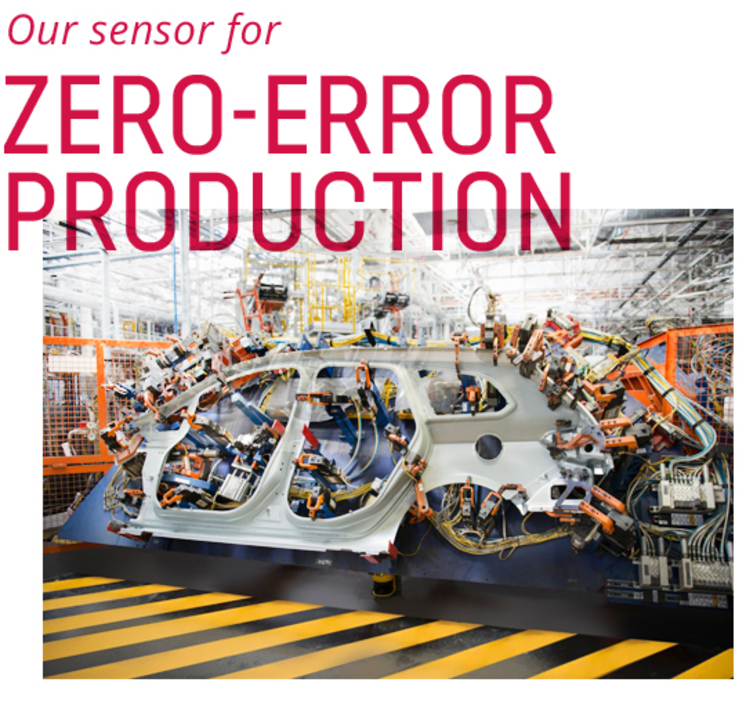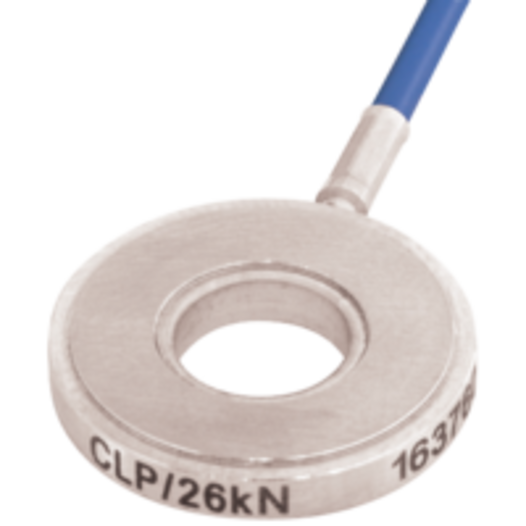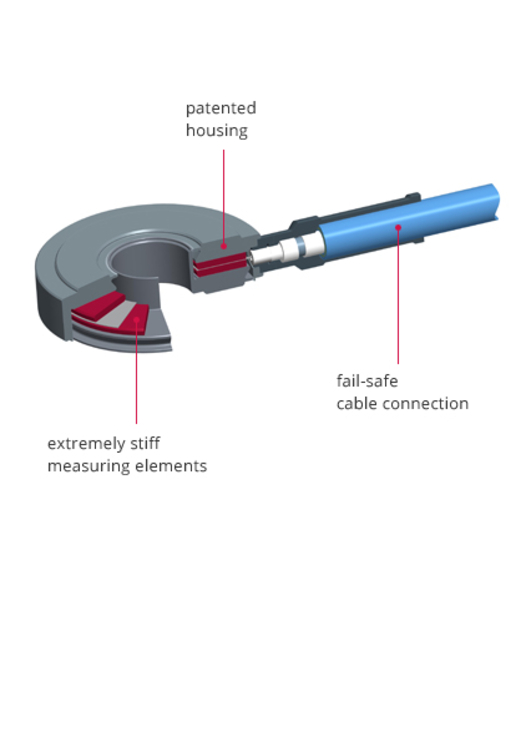
Therefore, a number of different production steps are monitored and controlled with the help of sensors. Besides the optimization of production and a reduction of defective products, it also reduces the wear-and-tear of expensive tools. For critical and/or safety-related components, sensor data is also used to completely document the production process. This documentation is often component specific, meaning the process parameters of each component are detected and stored.
This technique is used in assembly; for example, in pressing, screwing, welding, crimping, bonding, in product testing, tool monitoring, and chipping, as well as other subsequent uses.
...like our force sensor
CLP/26kN

The force sensor CLP/7kN with a height of only 3 mm and a diameter of 12 mm is best suited for the precise measurement of forces up to 7 kN in difficult installation situations. It fulfills protection class IP65 and, via a low-noise, oil-tight Viton cable, reaches a sensitivity level of 4.3 pC/N (having a very good signal-to-noise ratio) and a typical linearity of 0.5% FSO.
Sensor Technology
Reproducibility of the sensor signal and sensor life are both critical to the use of sensors in industrial process control. Ideally, the sensors have a product life that corresponds to the entire operation of the machine or at least a major inspection interval. The sensors should never have to be changed during normal operation. To reflect these needs, Piezocryst sensors are designed so that the shunting effect in the sensors is largely minimized, meaning that nearly the entire force to be measured flows through the piezo elements. Undesirable side effects such as hysteresis or creepage are minimized, as sensor properties depend largely on the piezoelectric crystal elements. By skillfully selecting the piezoelectric materials and sensing element geometry, it is possible to achieve nearly perfect measurement properties.
In addition to specific sensing elements, Piezocryst uses a patented semi-shell structure for force-sensor washers, replacing the conventional asymmetrical with a symmetrical structure. As a result, the sensors are less sensitive to adverse influences, and extremely flat sensors can be realized with an enormous stability.
Due to the extreme stiffness of the piezoelectric elements, distortions happen in the µm range and are significantly lower than alternative methods of measurement. In addition, crucial force-displacement information for many applications is not affected using piezoelectric sensors. Minimal distortion ultimately means that possible wear and tear is reduced to a minimum resulting in a long product life. The results of combining sophisticated design with advanced manufacturing technology are extremely linear sensors with enormous overload capabilities.
Thus, sensors with a minimum load of 50000 N are able to reliably process forces in the mN range and measurements of the lowest strength ae easily possible even with high mechanical preloads.
